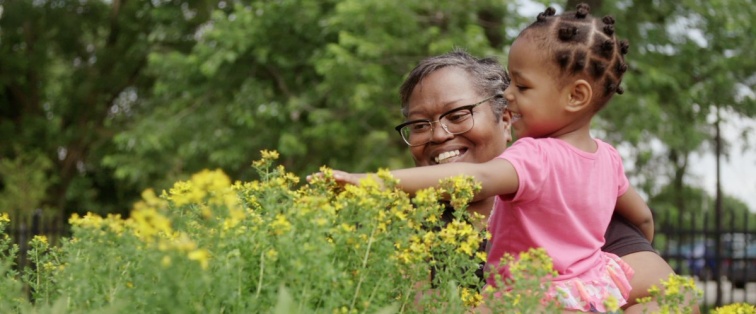Kinship Care in the Opioid Epidemic: The Overlooked Caregivers of the Overlooked Victims

Editor's note: This opinion piece orginally appeared on Philly.com's "Health Cents."
As our nation continues to reel from a decades-long opioid epidemic that has devastated families and communities, the public health response has focused on reducing fatal overdoses and treating addiction. Those are of course necessary and noble actions, but we must also be dedicated to strengthening supports for children in these families – the bystanders to this epidemic who are just as impacted yet rarely seen, save for haunting images of being stranded in minivans while their parents succumb to overdoses in the front seat.
Bringing these children out from behind the curtain is not easy because there are few statistics that characterize who they are. Perhaps our clearest lens is through the foster care system, which is responsible for removing children from unsafe home environments. Between fiscal years 2012 and 2016, our nation saw a 10 percent increase in the number of children in foster care, and in FY16 22,000 more children newly entered foster care than in FY12. We don’t know yet how much of this increase is directly related to the opioid epidemic – the federal Children’s Bureau only began reporting data on circumstances for a child’s removal in FY15. However, in just one year since the reporting began, the number of children removed from their homes due to parental drug abuse increased by seven percent.
This growing burden falls on a system that struggles with limited funding and recruiting foster families. One alternative to supplement insufficient foster care resources during this opioid epidemic is to acknowledge and support the critical role that family members have historically played in providing for children in times of need through what is known as “kinship care.”
Kinship Care: Blood May be Thicker Than Water
Kinship care refers to guardianship over a child by a relative, often a grandparent, aunt or uncle. By 2013, 7.8 million children, or nearly 10 percent of all children in the United States, resided in families in which the head of the household was a grandparent or other relative, and as many as 2.7 million children were being raised by their relatives in absence of their biologic parents. I have to believe that number is even higher today in the face of the opioid epidemic.
Furthermore, the vast majority of kinship families make these arrangements without formal connection to the foster care system. Disproportionately represented by older relatives and grandparents, these family members often care for children while facing significant financial hardship and lacking access to services to help children deal with the trauma of being separated from their parents.
Witnessing these challenges among kinship families in our primary care practices, my colleagues at the American Academy of Pediatrics (AAP) and I reviewed the research on the needs of kinship families and how their children fare. What we found, issued in a 2017 AAP policy statement, is evidence that supporting kinship caregivers might be our best strategy for raising children who have experienced trauma and are at risk for related health and social effects. In fact, children in kinship care likely have equivalent, if not better, long-term health, schooling and employment outcomes than children raised by non-relative foster parents. Additionally, kinship caregivers may be more likely to weather the storm of a child’s emotional crisis or related behavioral issues, thus preventing children from being bounced between multiple foster placements – a typical response when foster parents feel ill-equipped to care for a child experiencing behavioral challenges.
This does not mean non-relative foster parents cannot positively impact the children in their care, or that there are no inappropriate kinship caregivers, but it may show that in many instances, blood is thicker than water.
Why Pennsylvania Should Develop a Kinship Care Navigator Program
So, how can we support relatives so they are better able to care for these children? And in so doing, how can we be inclusive of the many arrangements that are not managed within our formal foster care systems?
One answer might lie in developing robust kinship care navigator programs, which can support caregivers by increasing awareness about existing resources that they may not know are available. Such services tend to include support groups, financial and legal aid, education services for children and other family-based supports. The delivery of these services differs by program, but some studies have shown that kinship caregivers take advantage of these programs and are satisfied with the services they use.
A kinship care navigator program proposal (HB 2133) passed in the Pennsylvania House of Representatives last week that, if signed into law, would administer a toll-free information hotline, fund training for navigators and create a statewide marketing campaign so kinship caregivers are aware of the program. These interventions would support the 90,000 children in this state who are in kinship care.
Whether you’re experiencing it in your family or your neighborhood or just hearing about it on the news, we’re all confronted by the opioid epidemic every day. We can’t afford to ignore the buckling of the systems supporting children through this crisis, or the fact that family members are often taking on new guardianship roles without adequate assistance. If we are to continue our response to the opioid crisis with an adult-focused lens, we will miss an opportunity to help ensure a brighter future for the children who lie in the epidemic’s wake.

